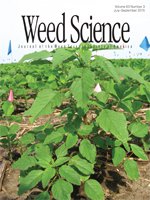Substantial resources are spent each year on weed control, but in many cases eradication projects are incomplete. Here we used the computer program NEWGARDEN to model whether alternate geometric patterns of incomplete removal (99% removed) of the increasingly invasive Callery pear from an isolated fragment differentially affect the rate of population recovery and genetic diversity retention. Geometric patterns of remaining founders within the fragment (1% of the fragment area) included: (A) a long rectangular strip centered on one edge; (B) a square at one corner; (C) a central square; or (D) scattered randomly throughout the entire fragment. Population re-growth and genetic diversity retention measures for each geometric removal pattern were modeled under two contrasting gene dispersal patterns (via both offspring and pollen): short versus long dispersal (both leptokurtic relative to the pistillate plant). After 14 bouts of mating, the greatest difference in census size among comparative recovery populations amounted to 393% (centered founders, long gene dispersal > scattered founders, short gene dispersal). The best pattern of removal for suppressing population regrowth was to leave founders scattered throughout the fragment when gene dispersal was short, or at one corner if gene dispersal was long. The only removal pattern that differed substantially in population genetics characteristics was when remnant individuals were left scattered throughout the fragment and dispersal was short (alleles continued to be lost; observed heterozygosity dropped 13.3% and was still rapidly declining; and inbreeding and/or subdivision were moderate (Fit = 0.12) and still rapidly increasing). Such comparative modeling can be used to suggest removal patterns that might greatly outperform other removal modalities in terms of suppressing the return of weed populations. The effectiveness of such modeling will be improved by acquisition of accurate life history information of targeted species.
Nomenclature: Callery pear, Pyrus calleryana Decne.





